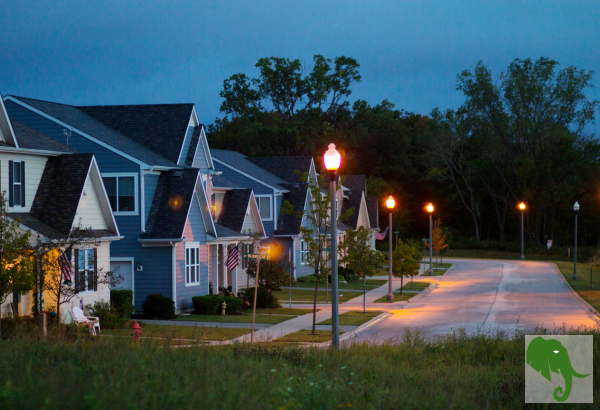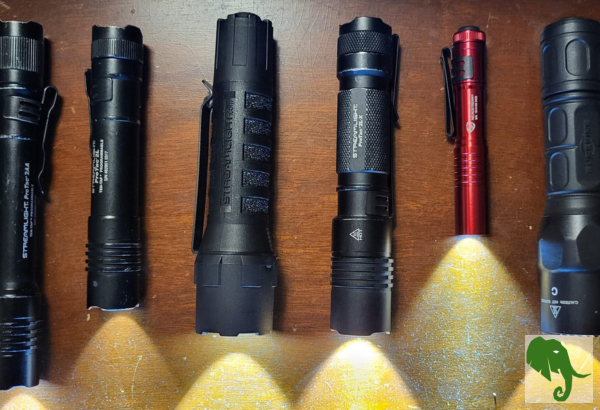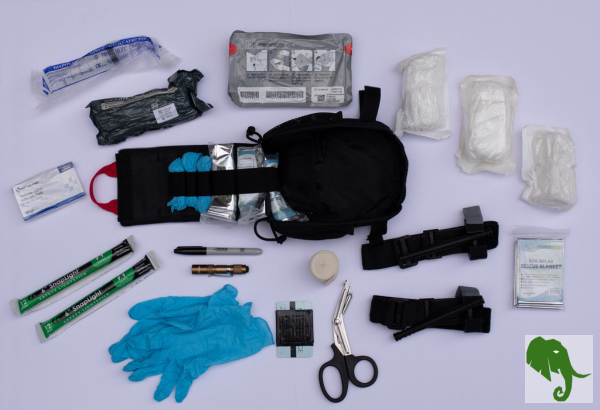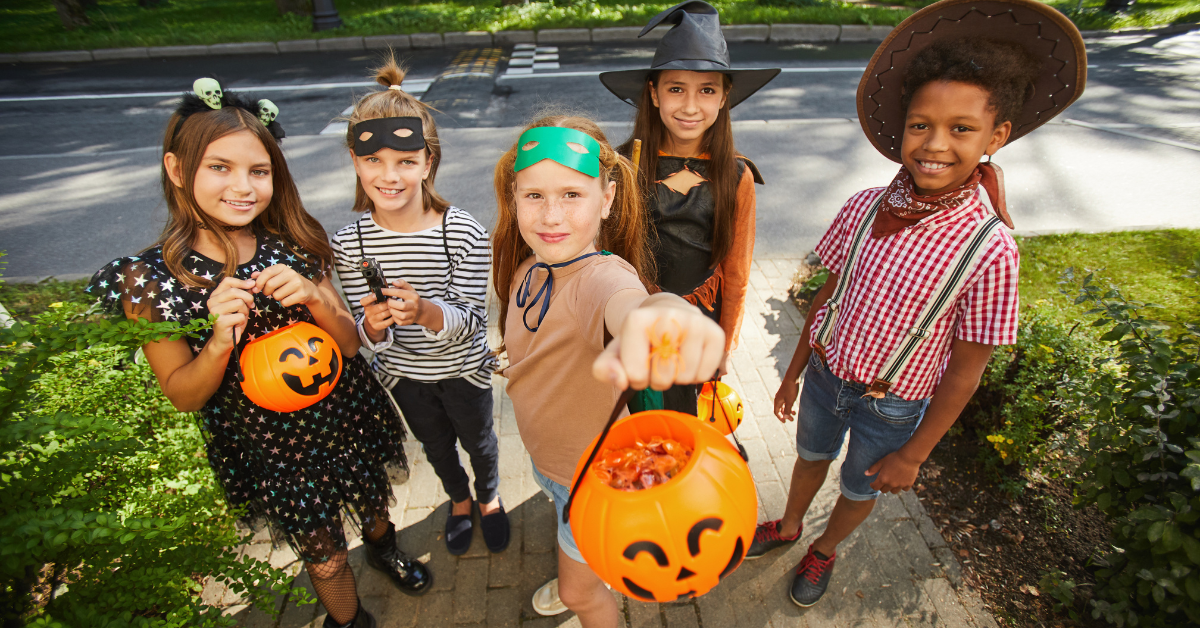
To be honest, I am excited to blog about Halloween. This used to be one of my favorite so-called holidays, as I’m sure it is with a lot of children. As much as I wanted to eat my way through the candy before we made it home, my parents would not let me. I’m not sure if the reason then is what it should be today—to inspect the candy first, or just because. I also remember we couldn’t eat some of the treats. I didn’t understand it then, but now I realize that eating homemade treats wasn’t safe, especially from strangers. This time we talk about Halloween safety while out trick-or-treating.
Today, there are multiple considerations a parent needs to take when going out for trick-or-treating with the kids. We’re going to cover some of what I believe are the more important Halloween safety considerations, but parents and guardians supervising the kiddos should always stay vigilant and trust their instincts. Whether it’s keeping an eye on the candy, choosing safe neighborhoods, or ensuring costumes are both fun and functional, trick-or-treating safety is no longer just about checking candy wrappers. It involves a mix of old-school caution and modern-day awareness. Let’s dive into some key tips that will help make sure your little ghouls and goblins have a fun, memorable, and most importantly, safe Halloween.
Costumes
I really enjoy all of the costumes that I see coming to our house and out on the street. Whether they are elaborately homemade, just enough to get by, or obviously store-bought, they all are great to see. However, there are many that may not be functional for the trick-or-treater. Either they’re too big, which may cause tripping, or they don’t allow kids to see properly.
To ensure costumes are both fun and safe, here are some key things to consider:
- Visibility: Masks can obstruct a child’s vision, making it hard to see steps, obstacles, or even cars. Instead of a full-face mask, consider makeup or face paint, which allows for a clear line of sight. If a mask is a must, make sure it fits well and has large enough eye holes.
- Fit and Length: Costumes that are too long can be a tripping hazard. Make sure costumes are hemmed to the right length, especially around the feet. If your child wants to wear something oversized, ensure it doesn’t drag on the ground.
- Bright or Reflective Elements: Since trick-or-treating happens in the evening, visibility to drivers is critical. Consider adding reflective tape or accessories to your child’s costume or opt for bright colors when possible. Glow sticks or small flashlights can also help keep kids visible in the dark.
- Comfortable Footwear: While kids may want to match their costume with fancy shoes, make sure they’re wearing comfortable and sturdy footwear. Slippery or ill-fitting shoes can make it hard to walk safely from house to house.
- Weather: Halloween weather can vary dramatically depending on where you live. If it’s cold, make sure your child’s costume allows for layers underneath, like long sleeves or thermal wear. Rain is another factor—consider waterproofing costumes with a clear poncho that doesn’t hide their outfit. On the flip side, if the weather is warm, opt for lightweight, breathable fabrics to prevent overheating, especially if your child is running around
- Flame Resistance: Ensure that costumes are made from flame-resistant materials, especially since kids might come close to jack-o’-lanterns with lit candles or other open flames. Even though real flames are less common now, it’s still something to consider.
By taking a few extra precautions with costumes, you can ensure that your little ones are not only dressed to impress but are also comfortable and safe for an evening of trick-or-treating. The excitement of Halloween shouldn’t be dampened by preventable accidents like tripping over long costumes, struggling with visibility from masks, or being unseen by drivers in the dark. When costumes are fun, functional, and weather-appropriate, kids can focus on enjoying the spooky fun while parents can have peace of mind knowing they’re prepared for a safe night of trick-or-treating.
Walking the Route
The one thing I disliked most about Halloween as a child—and later as a parent—was all the walking. I remember that the longer we were out, the less we paid attention to traffic and street signs. We lived in a large subdivision, so it was impossible to cover it all in one night. Often, we would head out without any real plan, which proved to be exhausting. Kids always want to continue, trying to fill their baskets to the brim, and they can get upset when it was time to head home because proper expectations are not set before heading out.
Here are some tips to make the trick-or-treating route safer and more enjoyable:
- Walk, Don’t Run: It’s easy for kids to get excited and rush from house to house, but running increases the risk of tripping, falling, or running into traffic. Remind them to walk and stay calm, even when they’re eager to get to the next house.
- Plan the Route: To avoid wandering aimlessly and getting too tired, plan a route in advance. Pick a specific area or loop that you can reasonably cover, and let the kids know the plan ahead of time. This sets expectations and makes it easier to manage energy levels. If it’s a large neighborhood, you can always pick a different section the next night or over the Halloween weekend if you area has an extended event.
- Accompany Young Children: A parent or responsible adult should always accompany young children while they trick-or-treat. Make sure everyone knows the route, and older kids should travel in groups for added safety. It’s important for adults to stay close enough to monitor but far enough to let the kids enjoy their independence.
- Approach Only Houses That Are Lit: Teach children to only approach houses with their porch lights on, as this is generally the signal that a home is welcoming trick-or-treaters.
- Cross Streets Safely: Always cross the street at corners, using traffic signals and crosswalks where available. Avoid darting across the middle of the street or between parked cars. And remind kids to make eye contact with drivers before crossing in front of a vehicle to ensure they are seen.
- Minimize Distractions: Put electronic devices down while walking and especially when crossing streets. Looking at a phone or other device increases the risk of missing an obstacle or failing to notice traffic.
- Stick to Sidewalks: Always walk on sidewalks or paths where possible. If there aren’t sidewalks, walk on the left side of the street, facing traffic, and as far off the road as possible.
- Carry a First Aid Kit: The parent or responsible adult should also consider carrying a first aid or Trauma kit in case of an emergency. Always remember we are our own first responders.
By planning ahead and following these basic trick-or-treating safety measures, the night can stay fun without sacrificing safety. A little preparation can go a long way in ensuring everyone has a safe and enjoyable time out trick-or-treating.
Inspecting the Haul
Now going home and dumping out all of the candy on the floor was almost like Christmas in October. I would, and still do, get excited to see all of the treats. However, inspecting the candy and portioning it out is probably one of the most important safety tips. Whether it be a toddler, adolescent, or senior citizen, we all enjoy a good piece of candy. But too much of a good thing can sometimes be bad, and it doesn’t take much of a bad or tainted piece to make us sick or cause serious health issues. Trick-or-treating safety doesn’t end when you are finished for the evening.
When it comes to inspecting candy, here are some key points to keep in mind:
- Check Packaging: Look for any signs of tampering, such as torn or opened wrappers, or any candies that appear unusual or out of place. Discard anything that looks suspicious.
- Be Cautious with Homemade Treats: While homemade treats can be a lovely gesture, it’s essential to approach them with caution. Only accept homemade goodies from trusted sources, and when in doubt, it’s better to be safe and discard them.
- Limit Sugary Treats: After inspection, portion out the candy into reasonable amounts. This not only helps prevent stomach aches from overindulgence but also teaches children about moderation.
- Age-Appropriate Choices: For younger children, ensure that the candies are age-appropriate and pose no choking hazards. Hard candies, gummies, and items with small parts must be kept out of reach of toddlers.
The excitement of sorting through a Halloween haul can sometimes overshadow the need for safety, but it’s crucial to prioritize safety during and after trick-or-treating. By taking the time to inspect every piece of candy, treat, and sometimes a toy, and by educating children on what to look for, you can help ensure that Halloween treats remain a joy rather than a cause for concern.
Conclusion
Halloween is a time for fun, creativity, and cherished memories. It’s a holiday that brings out the kid in all of us, filled with costumes, laughter, and, of course, an abundance of candy. However, as we embrace the festive spirit, it’s crucial to keep safety at the forefront of our celebrations.
As parents and guardians, it’s our responsibility to create an environment where children can revel in the excitement of Halloween while being mindful of trick-or-treating safety. By weaving together old-school caution with modern awareness, we can help our children navigate the spooky festivities with confidence and security.
So, as you prepare for this year’s Halloween celebrations, remember that with a little preparation, awareness, and a sprinkle of fun, Halloween can truly be both safe and sweet. May your Halloween be filled with laughter, joy, and all the treats you can handle. Happy trick-or-treating!
Related Content

Community Safety: It Takes a Village
Some of our previous blogs focused on personal safety, a few in particular discussed safety around the home. We’ve covered topics like Enhancing Security Outside …

The Importance of Carrying a Flashlight
In any situation, having the ability to see clearly can mean the difference between life and death. This is especially true in low-light environments …

Prioritizing Your Safety When Walking, Jogging, or Running
Recently, I started walking again. I say ‘again’ though the last time I did any related movement was when I was jogging regularly, about 6 …

Building a Comprehensive Trauma Kit for Emergencies
In times of crisis or accidents, being equipped with the right tools can make the difference between life and death. Whether you’re out in the …

Read other OwnGuard Solutions blog posts
Read our other posts centered around being safer and better prepared.

